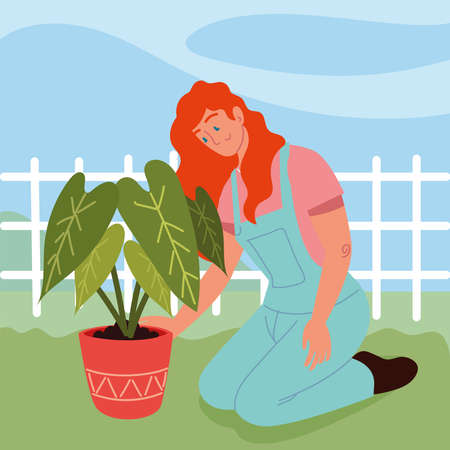1. Introduction to Guild Planting
In the world of permaculture, “guild planting” is a smart and sustainable way to grow plants that help each other thrive. Instead of planting crops in isolation, guild planting focuses on creating small communities of plants that work together like a team. These plant groupings mimic natural ecosystems and are designed to be self-sustaining, resilient, and beneficial to both people and the environment.
Permaculture is built on three core ethics: care for the earth, care for people, and fair share (returning surplus). Guild planting supports all three by reducing the need for chemical inputs, conserving water, improving soil health, and increasing biodiversity. When done right, it can make your garden or landscape more productive while requiring less maintenance over time.
What Is a Plant Guild?
A plant guild is a group of plants that fulfill different roles to support one main plant—often a fruit or nut tree—while also benefiting each other. Think of it as a mini-ecosystem where every plant has a job. These roles include attracting pollinators, fixing nitrogen in the soil, repelling pests, providing ground cover, and more.
Common Roles in a Plant Guild
| Role | Description | Example Plants |
|---|---|---|
| Main Crop | The primary plant you want to harvest from | Apple tree, blueberry bush |
| Nitrogen Fixer | Adds nitrogen to the soil for other plants to use | Clover, lupine, peas |
| Pest Repellent | Deters harmful insects naturally | Garlic, chives, marigold |
| Pollinator Attractor | Brings bees and butterflies to improve pollination | Echinacea, bee balm, yarrow |
| Ground Cover | Shelters soil, retains moisture, prevents weeds | Creeping thyme, strawberries |
| Dynamic Accumulator | Pulls nutrients up from deep soil layers | Dandelion, comfrey |
The Benefits of Symbiotic Plant Communities
The magic of guild planting lies in how these plants interact with one another. A well-designed guild creates a living system where plants support each others growth without human intervention. This leads to:
- Healthier soil: Thanks to nitrogen fixers and organic matter from dynamic accumulators.
- Pest control: Natural repellents reduce the need for pesticides.
- Biodiversity: A mix of plants invites beneficial insects and wildlife.
- Drought resistance: Ground covers help retain soil moisture.
- Sustainability: Less need for fertilizers and watering.
This approach not only makes gardening easier but also aligns with nature’s own systems. Whether youre working with a small backyard or planning a full-scale food forest, understanding guild planting is key to creating a thriving permaculture garden.
2. Core Components of a Plant Guild
In permaculture, plant guilds are thoughtfully designed communities where each plant plays a specific role to support the overall health and productivity of the system. Think of it like a well-balanced team—each member brings something unique to the table, and together they thrive. Below are the core components that make up a successful plant guild:
Nitrogen Fixers
Nitrogen is essential for plant growth, but many plants can’t access it directly from the air. That’s where nitrogen fixers come in. These are plants, usually legumes, that work with beneficial bacteria in their root systems to pull nitrogen from the air and store it in the soil. This helps feed surrounding plants naturally.
Common Examples:
- Peas
- Beans
- Clover
- Lupines
Dynamic Accumulators
These plants have deep roots that mine nutrients like calcium, potassium, and magnesium from deep in the soil. They bring these nutrients up to the surface and make them available to nearby plants when their leaves decompose or through mulching.
Common Examples:
- Comfrey
- Dandelion
- Nettles
- Borage
Ground Covers
Ground covers protect the soil by covering it with foliage, which helps retain moisture, prevent erosion, and suppress weeds. They also create habitat for beneficial insects and fungi.
Common Examples:
- Strawberries
- Creeping thyme
- Sweet woodruff
- Clover (also a nitrogen fixer!)
Pest Deterrents
Certain plants naturally repel pests through their scent or chemical compounds. Including these in your guild can help protect more vulnerable species without the need for synthetic pesticides.
Common Examples:
- Garlic
- Chives
- Marigolds
- Tansy
Pollinator Attractors
You want pollinators like bees and butterflies around if you’re growing fruiting plants. These flowers attract helpful insects that not only aid in pollination but can also keep pest populations in check.
Common Examples:
- Echinacea (coneflower)
- Borage (also a dynamic accumulator!)
- Alyssum
- Lavender
Quick Reference Table: Key Plant Guild Roles & Examples
| Role in Guild | Main Function | Examples |
|---|---|---|
| Nitrogen Fixers | Add nitrogen to soil naturally | Beans, Clover, Lupines |
| Dynamic Accumulators | Pull nutrients from deep soil layers | Comfrey, Borage, Dandelion |
| Ground Covers | Protect soil and suppress weeds | Creeping thyme, Strawberries, Clover |
| Pest Deterrents | Deter harmful insects naturally | Garlic, Marigold, Chives |
| Pollinator Attractors | Attract bees and other pollinators | Lavender, Alyssum, Echinacea |
By combining these elements thoughtfully, you can create a resilient ecosystem in your garden where every plant supports one another—just like nature intended.

3. Designing Effective Guilds for U.S. Climate Zones
Creating successful plant guilds in permaculture means understanding your local climate and choosing plants that naturally work well together. In the United States, climate conditions vary widely—from the cold winters of the North to the hot, dry summers of the Southwest. That’s where USDA hardiness zones come in handy. These zones help gardeners pick plants that are likely to thrive in their area.
Understanding USDA Hardiness Zones
The USDA Plant Hardiness Zone Map divides North America into 13 zones based on the average annual minimum winter temperature. Each zone is 10°F warmer (or colder) than the adjacent one. Knowing your zone helps you select plants that can survive and thrive in your garden throughout the seasons.
Quick Reference Table: Sample Guilds by USDA Zone
| USDA Zone | Main Tree/Plant | Support Species | Functions |
|---|---|---|---|
| Zone 3-4 (Northern U.S.) | Apple Tree (Malus domestica) | Nasturtium, Comfrey, Chives, Lupine | Pest control, nutrient accumulation, pollinator attraction, nitrogen fixation |
| Zone 5-6 (Midwest/Northeast) | Pear Tree (Pyrus communis) | Daffodils, Garlic Chives, Yarrow, Clover | Pest deterrent, dynamic accumulator, ground cover, nitrogen fixer |
| Zone 7-8 (Southeast) | Pecan Tree (Carya illinoinensis) | Baptisia, Lemon Balm, Mint, Vetch | Nitrogen fixing, insect repellent, soil improvement |
| Zone 9-10 (Southwest/California) | Citrus Tree (Citrus spp.) | Alyssum, Fava Beans, Marigold, Yarrow | Pest control, nitrogen fixing, pollinator support |
| Zone 11+ (Southern Florida/Hawaii) | Mango Tree (Mangifera indica) | Tropical legumes, Basil, Tithonia, Sweet Potato | Tropical biomass production, pest repellent, ground cover |
Selecting Plants for Function and Compatibility
A well-designed guild includes different types of plants that each play a specific role:
- Main Species: Usually a fruit or nut tree that forms the core of the guild.
- Nitrogen Fixers: Plants like clover or lupine that improve soil fertility.
- Diversifiers: Herbs and flowers like chives or yarrow that attract beneficial insects.
- Pest Repellents: Plants such as garlic or marigolds that deter unwanted bugs.
- Ground Covers: Like creeping thyme or sweet potato to reduce weeds and retain moisture.
- Nutrient Accumulators: Deep-rooted plants like comfrey that pull minerals from deep soil layers.
Tuning Your Guild to Regional Conditions
Your choice of plants should reflect not only your zone but also your microclimate—sun exposure, rainfall patterns, and soil type all play a role. For example:
If You Live in a Dry Zone (e.g., parts of California or Arizona):
Select drought-tolerant support species such as lavender or rosemary. Mulch heavily and use water-conserving ground covers like creeping oregano.
If You’re in a Humid Area (e.g., Southeast U.S.):
Add air-circulating herbs like basil and plant disease-resistant varieties to combat fungal issues. Choose native wildflowers for better adaptation to humidity and local pests.
A Few Tips for Success:
- Select native species whenever possible—they’re more resilient and require less maintenance.
- Create layers—use tall trees, mid-size shrubs, herbs, ground covers, and root crops together.
- Add organic mulch to support soil life and retain moisture.
- Observe your garden regularly and adapt—guilds are flexible systems!
This approach helps you build a thriving ecosystem right in your backyard while tailoring it to your region’s unique needs. By designing with USDA zones in mind and choosing the right plant partners, you’ll create healthier gardens with less work over time.
4. Plant Pairing Examples and Case Studies
Understanding how to build a successful plant guild is easier when we look at real-world examples. These combinations show how plants can support one another in terms of nutrient cycling, pest control, and space efficiency. Whether youre working with a large homestead or a small backyard garden, theres a guild strategy that can work for you.
The Classic Three Sisters Guild
This traditional Native American planting method is one of the most well-known guilds and still holds up today in both rural and urban settings. The Three Sisters—corn, beans, and squash—support each other in simple but powerful ways:
| Plant | Function |
|---|---|
| Corn | Grows tall and provides a natural pole for beans to climb. |
| Beans | Fix nitrogen in the soil, enriching it for all three plants. |
| Squash | Sprawls across the ground, acting as living mulch to suppress weeds and retain moisture. |
Backyard Apple Tree Guild
If you have an apple tree or are thinking about planting one, consider building a supporting guild around it. This setup helps reduce pests and improve soil health without chemicals.
| Guild Element | Example Plants | Purpose |
|---|---|---|
| Main Crop | Apple Tree | Provides fruit and shade; central element of the guild. |
| Nitrogen Fixers | Clover, Lupine | Add nitrogen to the soil naturally. |
| Pest Repellents | Garlic, Chives | Deter common fruit tree pests like aphids. |
| Pollinator Attractors | Borage, Yarrow | Bring bees and other beneficial insects into the area. |
| Ground Cover | Strawberries, Creeping Thyme | Suppress weeds and keep soil moist. |
Urban Balcony Herb Guild
You don’t need a big yard to use guild principles. Even apartment dwellers can try container-based plant partnerships. Heres a great combo for culinary herbs that also help each other thrive:
| Herb | Companion Benefit |
|---|---|
| Basil | Keeps away flies and mosquitoes; enhances flavor of nearby tomatoes if grown together. |
| Parsley | Attracts hoverflies that prey on aphids. |
| Chives | Deters aphids; easy to grow in small pots. |
Permaculture Guild for Tomato Beds
If youre growing tomatoes, consider adding these companion plants to form a productive mini-guild:
- Basil: Improves tomato flavor and deters insects like whiteflies.
- Marigolds: Repel nematodes and pests with their scent.
- Nasturtiums: Act as a trap crop by attracting aphids away from your tomatoes.
- Lettuce: Can be planted between tomato rows to act as living mulch and maximize space usage.
This kind of pairing not only boosts harvests but also makes your garden look vibrant and full of life. By applying these examples, you can start creating your own customized plant guilds tailored to your specific environment and goals.
5. Maintaining and Evolving Your Guild
Once your plant guild is established, the real work begins—maintaining and evolving it over time. A successful permaculture guild isn’t a “set it and forget it” system. It’s a living, breathing community that requires attention, observation, and seasonal adjustments to keep everything in balance.
Observe and Respond
One of the core principles of permaculture is “observe and interact.” Spend time in your garden regularly to see how your guild is performing. Look for signs of stress, pest activity, or plants outcompeting others. Are certain plants thriving while others are struggling? Is there enough mulch? Are pollinators visiting?
Tips for Observation:
- Keep a garden journal with notes on weather, plant health, and wildlife activity.
- Take photos throughout the seasons to track changes.
- Use simple tools like soil thermometers or moisture meters if needed.
Maintain Balance Within the Guild
A healthy guild supports itself through natural relationships like nitrogen-fixing, shading, attracting beneficial insects, and repelling pests. But sometimes these relationships shift. You might need to prune back aggressive growers or add new species to restore balance.
Common Maintenance Tasks:
| Task | Purpose | Frequency |
|---|---|---|
| Mulching | Suppress weeds, retain moisture, feed soil | 1–2 times per year |
| Pruning | Control plant size, improve air flow | Seasonally as needed |
| Diversifying Species | Strengthen ecosystem resilience | Annually or biannually |
| Pest Management | Encourage beneficial insects, remove diseased plants | Ongoing observation |
Make Seasonal Adjustments
Your guild will change with the seasons—and so should your care routine. In spring, you may need to plant new companions or top off mulch layers. In summer, water deeply during dry spells. In fall, chop-and-drop spent plants to feed the soil. Winter is a good time for planning and reviewing what worked (and what didn’t).
Seasonal Care Overview:
| Season | Main Focus Areas |
|---|---|
| Spring | Sow seeds, replenish mulch, amend soil if needed |
| Summer | Irrigation, pest management, support rapid growth |
| Fall | Add organic matter, harvest, save seeds, prune lightly |
| Winter | Plan next year’s layout, order seeds, review journal notes |
Nurture Relationships Between Plants Over Time
The magic of guild planting lies in the relationships between species. Encourage those connections by allowing plants to self-seed where appropriate and by adding new elements that complement existing ones—like introducing dynamic accumulators or flowering herbs to attract pollinators.
A Few Ideas to Strengthen Guilds:
- Add comfrey or yarrow as nutrient accumulators.
- Plant borage or calendula for pollinator attraction.
- Add clover or lupine for nitrogen fixation if levels drop.
- Create microhabitats with logs or rocks for beneficial insects.
The key is to stay flexible and respond to what your garden tells you. With consistent care and thoughtful evolution, your plant guild will become more productive and resilient year after year.


